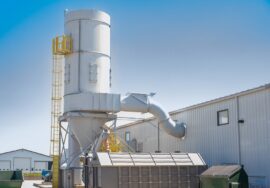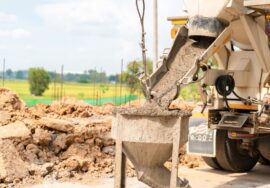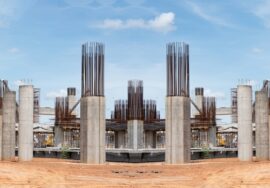
Construction Dust Suppression for Cleaner Sites
Construction Dust Suppression for Cleaner and Safer Sites
Dust pollution is one of the most pressing environmental challenges in the construction industry. From excavation and demolition to roadwork and material handling, every stage of a project produces airborne particles that affect air quality, health, and the environment. That’s where construction dust suppression comes in — a crucial part of sustainable site management.
Effective construction dust suppression techniques not only improve worker safety but also ensure compliance with environmental regulations. By controlling dust emissions, companies contribute to cleaner air, healthier communities, and more sustainable urban growth.
Why Construction Dust Suppression Matters
Dust from construction sites can contain harmful particles such as silica, metal residues, and other pollutants. Without proper construction dust suppression, these fine particles disperse into the air, causing respiratory problems, reduced visibility, and even environmental damage.
Key reasons why construction dust suppression is essential:
-
Improves Air Quality: Minimizes suspended dust and particulate matter (PM2.5, PM10).
-
Protects Worker Health: Prevents lung diseases and long-term respiratory issues.
-
Reduces Environmental Impact: Prevents dust from contaminating soil and water.
-
Ensures Regulatory Compliance: Helps meet air pollution control standards.
-
Enhances Site Safety: Reduces visibility hazards during excavation and transport.
By integrating construction dust suppression systems into every project, builders can achieve sustainable operations and community well-being.
Sources of Dust in Construction
Before implementing dust suppression, it’s important to identify where it originates. Common sources include:
-
Earthmoving activities: Excavation, grading, and trenching.
-
Material transport: Trucks carrying loose materials.
-
Demolition: Breaking down old structures releases fine debris.
-
Cutting and grinding: Power tools generate airborne dust.
-
Unpaved roads: Vehicle movement lifts particulate matter.
Recognizing these sources helps apply targeted construction dust suppression measures that are both cost-effective and efficient.
Effective Construction Dust Suppression Methods
Several innovative construction dust suppression methods are now used across projects to reduce emissions and improve air quality.
1. Water Spraying Systems
The most common method, water spraying, helps settle airborne dust. High-pressure misting systems or water tankers can efficiently cover large areas and minimize dust release.
2. Dust Control Chemicals
Eco-friendly dust suppressants like magnesium chloride or biodegradable polymers create a binding layer on surfaces, preventing dust from rising.
3. Vegetative Cover and Soil Stabilization
Planting temporary vegetation or using geotextiles helps hold soil in place, reducing wind erosion and dust formation.
4. Enclosures and Barriers
Installing physical barriers, such as windbreaks and dust screens, limits dust dispersion, especially in urban or populated areas.
5. Paved or Treated Roads
Regularly paving or treating site access roads prevents dust generation from vehicle movement.
Each of these construction dust methods can be customized based on site conditions, weather, and project duration.

Regulations and Guidelines in India
In India, the Central Pollution Control Board (CPCB) mandates strict dust control measures for construction projects to curb air pollution. Municipal corporations across cities like Delhi, Mumbai, and Bengaluru have introduced fines and mandatory construction dust plans for all large-scale projects.
Adhering to these guidelines not only prevents legal penalties but also strengthens a company’s reputation for environmental responsibility.
Benefits of Construction Dust Suppression
Implementing effective construction dust suppression practices offers multiple advantages:
-
Cleaner Work Environment: Reduced airborne particles ensure a safer site.
-
Lower Carbon Footprint: Supports low-emission construction goals.
-
Healthier Workforce: Protects laborers from chronic respiratory conditions.
-
Community Acceptance: Demonstrates corporate responsibility to nearby residents.
-
Regulatory Compliance: Meets national air quality standards and sustainability criteria.
Incorporating construction dust strategies is an investment in both sustainability and corporate image.
Sustainable Approaches to Dust Control
To enhance construction dust suppression, builders can integrate modern sustainability solutions such as:
-
Smart sensors for air quality monitoring.
-
Electric and hybrid equipment to reduce emissions.
-
Recycled materials that minimize on-site waste.
-
Green barriers using vegetation for natural filtration.
These methods align with green construction practices, promoting environmental balance and better project performance.
Partner with Experts in Sustainable Construction
At AMS India, we prioritize sustainability and environmental responsibility in every project. Our construction services include advanced construction dust solutions that reduce pollution, ensure compliance, and enhance worker safety.
With modern technology, eco-friendly methods, and expert guidance, AMS India helps clients achieve their sustainability goals effectively and responsibly.
Conclusion
Construction dust is not just a regulatory requirement — it’s a critical step toward sustainable development. By implementing effective dust control measures, the construction industry can protect the environment, safeguard health, and contribute to cleaner cities.
As India advances toward greener infrastructure, adopting modern construction dust techniques will play a vital role in building a cleaner, safer, and more sustainable future.
Read more related articles to enhance your knowledge and make informed decisions
Cost-Effective Modular Construction: Fast, and Sustainable Building Solutions
Smart Modular Buildings: Innovative, Efficient, and Sustainable Construction








